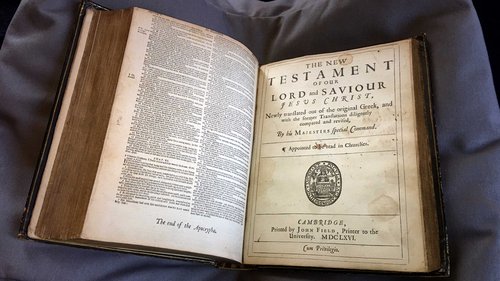The cynicism so many readers have towards the mainstream media arises in part from the worldview articulated by Richard Pryor — “Who you gonna believe, me or your lying eyes?” from his 1982 film “Live on the Sunset Strip”.
“Who you gonna believe, me or your lying eyes?” So saith Richard Pryor in his 1982 film “Live on the Sunset Strip”. Caught in flagrante delicto with another woman by his wife, Pryor’s character in his stand up comedy routine denies the claims of objective reality by reference to a higher authority — himself.
Reading the Miami Herald’s story this morning entitled “Long overdue: This book was stolen in 1840. Now it’s back on the library shelf” shook loose this phrase from the windmills of my mind.
You might well ask why I would think of Richard Pryor when reading a light news item concerning the return of an overdue Irish library book. I am seldom subject to Richard Pryor flashbacks. However, the text of this story — which was distributed via the Fort Worth Star-Telegram’s syndication service — is rather odd and speaks to a reporter unfamiliar with his subject matter. But it was the illustration that accompanied the article that was immediately problematic. SImply put — nothing matches. What is written in the article does not match what is presented in the accompanying illustrations.

The lede begins: A book published in 1666, believed to be one of only two in the country of its kind, was returned to Marsh’s Library in Ireland after going missing for nearly 180 years.
The book, a prayer guide of sorts for members of the old Church of England, was brought back to the library by none other than a priest, who found the 17th Century tome while going through a pile of dusty books in his Monkstown parish rectory, according to the Irish Sun. It had been missing since 1840, when it was taken from the library’s reading room. This wasn’t one that could be checked out.
A picture of a tweet from the Marsh’s Library follows the second paragraph. It shows the book in question, while a close up of the recovered volume appears at the top of the article.
Reading the text, the description of the Book of Common Prayer as a “prayer guide of sorts for members of the old Church of England” is problematic. Is the author ignorant or is he trying to be arch, or knowing, or cool? The BCP is the liturgy of the Church of England — the rites used in worship by its adherents — in 1662 when it was first published and remains in use to this day along with other authorized texts.
A “prayer guide of sorts” speaks to a collection of maxims, favorite prayers, commendable quotes — a Book of Common Prayer sets the parameters of belief for a communicant of the Church of England. Lex orandi, lex credendi (law of praying [is the] law of believing} is a fundamental character of Anglicanism. The BCP, along with the Thirty-nine Articles of Religion and the Ordinal, comprise the Anglican Formularies which set the theological parameters of the faith. Justification by faith alone, one of the points of contention between Protestants and Catholics over the past 500 years, is firmly anchored in the Anglican way by its presence in the church’s prayers.
Read it all at The Media Project






